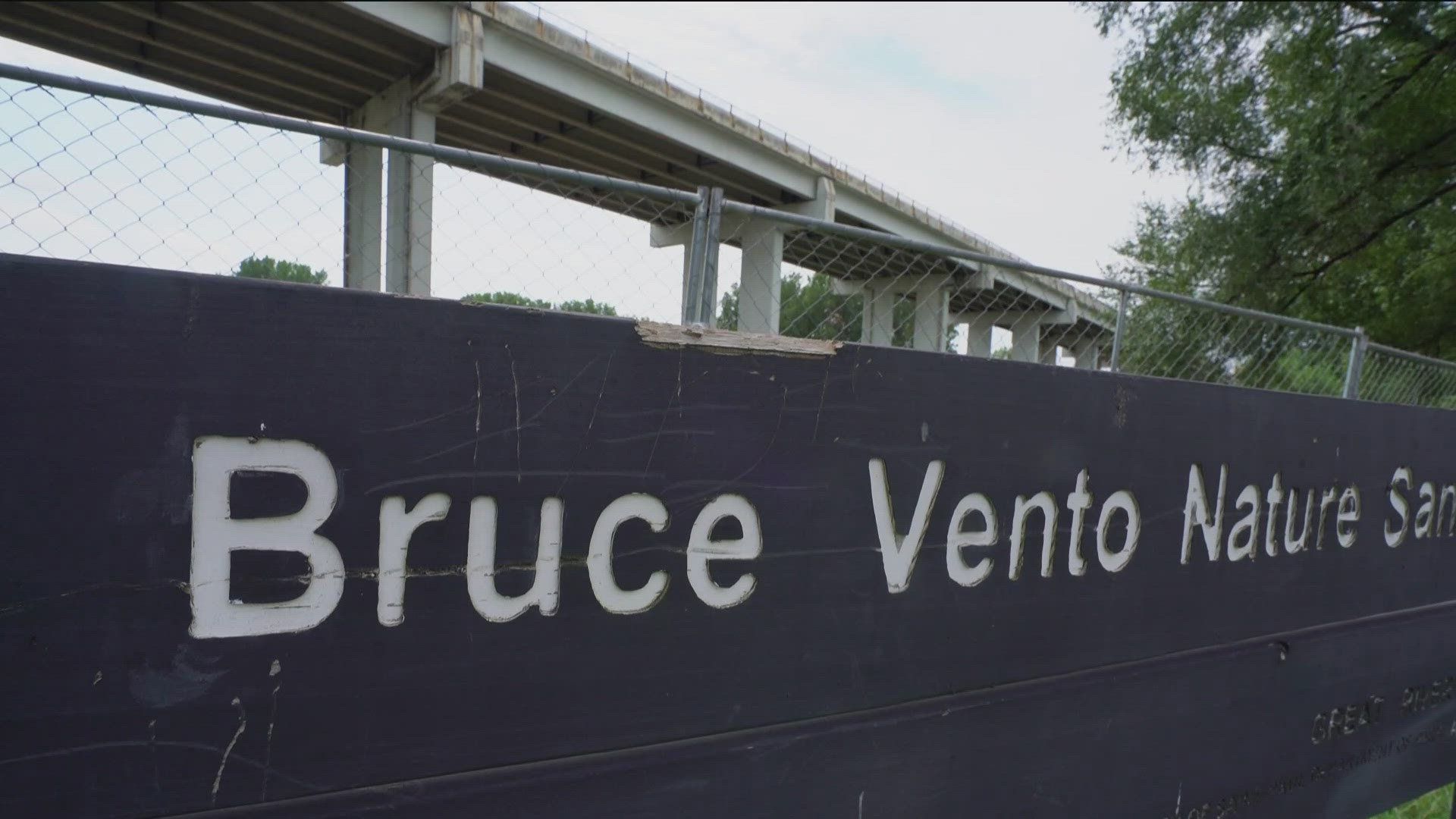ST PAUL, Minn. — Since the '50s, the Pioneer Press has hosted a treasure hunt as part of the St. Paul Winter Carnival.
This year, they chose to hide a medallion in Bruce Vento Nature Sanctuary, a city owned park.
That didn't go over well with Waḳaŋ Ṭípi Awaŋyaŋkapi, a Native-led nonprofit that cares for the park, and the newspaper vowed the nature sanctuary would be off limits in the future.
Right now, the park is temporarily closed as crews work to replace the Kellogg-3rd Street bridge. It's set to reopen Sept. 9.
And that's not all that's under construction.
Bruce Vento Nature Sanctuary lies between I-94 and the Mississippi River and is not far from the busy streets of downtown St. Paul.
"It's really amazing just seeing how beautiful the site can be from year-to-year or even month-to-month," Waḳaŋ Ṭípi Awaŋyaŋkapi Environmental Restoration Manager Gabby Menomin said.
Menomin says it wasn't always so beautiful, when railroad and other industrial developments nearly destroyed it.
"It had been an unofficial city dump," she recalled. "[It] was full of a lot of invasive species."
But Menomin says the habitat has already improved since 2020 when the nonprofit's restoration work began.
"We've really seen an increase in biodiversity, a lot more wildlife and migratory birds especially coming back," she said. "A really cool story actually, we had a mating pair of killdeer birds that had been down there for a couple of years and last year they had their first batch of chicks."
Menomin explained why the land is sacred.
"At the back of the sanctuary is the Waḳaŋ Ṭípi cave," she said. "Its name itself, Waḳaŋ Ṭípi, kind of loosely translates to 'something sacred lives there,' and so in the past, before the railroad had kind of destroyed the inside of the cave, there had been pictographs on the inside of the cave really depicting that this area, and that cave, was a very important cultural place … The sacred site is still being used for ceremony purposes for some of the neighboring Dakota tribes as well ."
She says the cave is historically connected to Indian Mounds Park, where there are burial mounds on the bluffs above the cave.
But not everyone has treated the land respectfully, she said, referring to this past January when individuals went digging for a medallion there as part of the annual Pioneer Press Treasure Hunt - as well as daily recreational activities taking place.
"Currently it's designated as a park," Menomin said. "Should it be considered a park in the future? We've just been having a lot of these internal conversations, conversations with the city as well that, you know, think about how do we want to educate people on how to treat the site?"
In May, Waḳaŋ Ṭípi Awaŋyaŋkapi and the city broke ground on a cultural and environmental interpretive center. The new Waḳaŋ Ṭípi center is set to open next summer.
They may be getting more support to educate the public now that the Legislative-Citizen Commission on Minnesota Resources has recommended the nonprofit receive 3 years of state funding from the Environment and Natural Resources Trust Fund.
"Yeah, so it's not official that we are receiving the funding," Menomin explained. "The funding will become official after [the 2025] legislative session where then the governor will sign it into law."
According to the press release, LCCMR will meet this winter to finalize the recommendations. The commission initially received 214 proposals requesting approximately $183 million total, and some of the groups behind them were later invited to provide a presentation for further consideration.
Ultimately, 125 projects received a recommendation to the Legislature for some portion of the approximately $103 million available. Waḳaŋ Ṭípi could receive $669,000 of those funds.
"It's gonna really help us kind of step into this co-management agreement with the city of Saint Paul … about how our organization can take on a stronger leadership role," Menomin said.
The additional dollars would also allow for more educational programming.
"The Bioblitz, which is a citizen science where people are able to come out to the site once a year and learn from our environmental partners and professionals that we invite, and we try to identify as many different species at this site as possible," she said. "A lot of great environmental projects [are] happening in Minnesota, a lot of great environmental education as well. It's really exciting."

